Global S&T Development Trend Analysis Platform of Resources and Environment
| Unsaddling old theory on origin of horses | |
| admin | |
| 2018-02-22 | |
| 发布年 | 2018 |
| 语种 | 英语 |
| 国家 | 法国 |
| 领域 | 地球科学 |
| 正文(英文) | Botai horses were tamed in Kazakhstan 5,500 years ago and thought to be the ancestors of today's domesticated horses . . . until a team led by researchers from the CNRS and Université Toulouse IIIPaul Sabatier sequenced their genome. Their findings published on 22 February 2018 in Science are startling: these equids are the progenitors not of the modern domesticated horse, but rather of Przewalski's horsespreviously presumed wild!
The earliest proof of equine domestication points to the steppes of Central Asia roughly 5,500 years ago. Current models suggest that all modern domesticated horses living now descend from those first tamed in Botai, in the north of present-day Kazakhstan. For CNRS scientist Ludovic Orlandofrom the Anthropologie Moléculaire et Imagerie de Synthèse research lab (CNRS / Université Toulouse III Paul Sabatier / Paris Descartes University)and his team, sequencing the genomes of 20 of these horses provided a snapshot of biological evolution associated with domestication. Indeed, it is nearly impossible to uncover the earliest stages of domestication through analysis of modern horse genomes, which have been considerably transformed by humans through selective horse breeding.1
Yet this genomic analysis yielded unexpected results. Though Botai horses did not give rise to today's domesticated horses, they turn out to be direct ancestors of Przewalski's horses. Thus the latter, commonly thought to be the last wild horses on our planet, are actually the feral descendants of the first horses ever to have been domesticated. The study highlighted certain changes that occurred with this return to a wild state, including the loss of leopard spotting characteristic of the Botai horse. The allele responsible for this coloration was probably eliminated by natural selection as it also caused night blindness. The team's genomic analysis of twenty-two Eurasian horses, whose lives collectively span the last 4,100 years, has revealed that none are related to the Botai horse. So the origin of modern domestic horses must be sought elsewhere. The researchers are now focusing on other candidate locations in Central Asia as well as on the Pontic-Caspian steppe of southern Russia, in Anatolia, and at various European sites that are refuges for these animals. This work was funded by the ERC (PEGASUS #681605), Villum Fonden (miGENEPI), the Danish Council for Independent ResearchNatural Sciences (4002-00152B), and Toulouse University's IDEX Chaires d'Attractivité program (OURASI). It brought together 47 researchers from 28 institutions.2 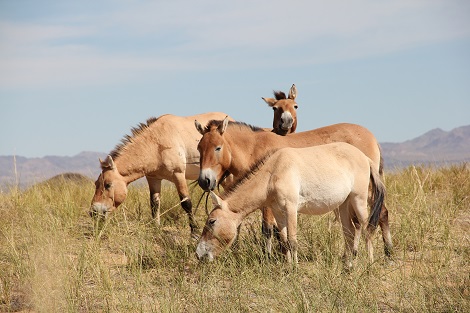 © Ludovic Orlando / Natural History Museum of Denmark / CNRS Przewalski's horses, Seer reintroduction reserve, Mongolia. 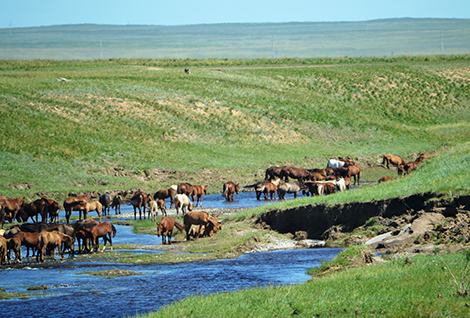 © Alan Outram / University of Exeter Modern domestic horse herd in northern Kazakhstan, 2016. 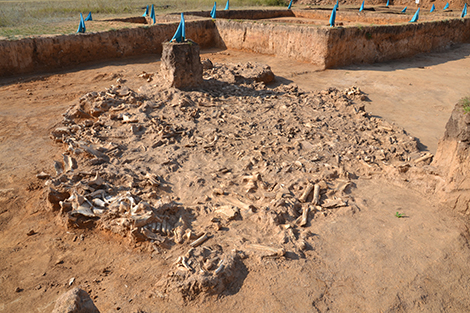 © Alan Outram / University of Exeter Excavation at the Botai site, Northern Kazakhstan, 2017. 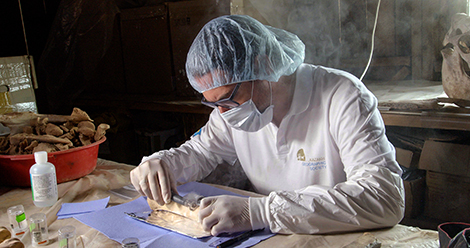 © Daron Donahue & Niobe Thompson. Clearwater documentary. Ludovic Orlando sampling the remains of Botai horses, Kazakhstan, August 2016. 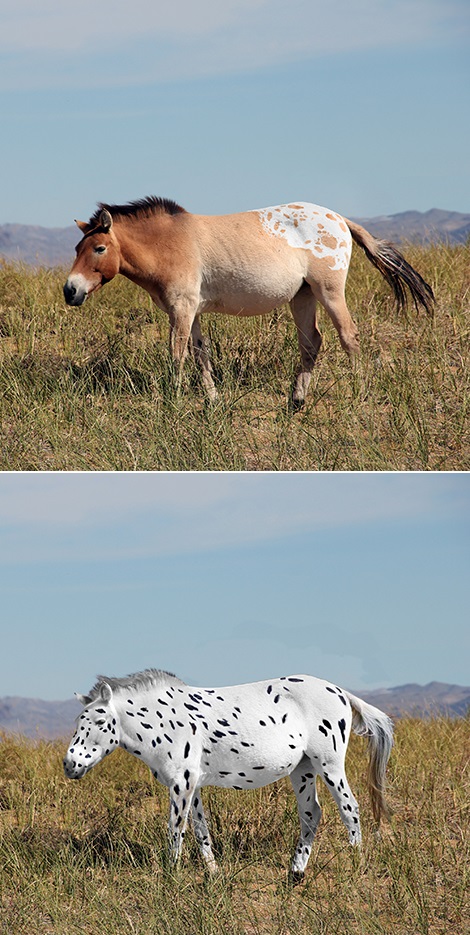 © Photograph by Ludovic Orlando, reworked by Sean Goddard and Alan Outram. Artistic reconstruction of Botai horses based on genetic evidence. Other pictures are available upon request (veronique.etienne@cnrs.fr). Download the press release:  Notes:1 In a recent study, Orlando's team reconstructed the genomes of Scythian horses and clearly demonstrated that they had been drastically modified over the last 2,000 years. See View web site Bibliography:Ancient genomes revisit the ancestry of domestic and Przewalski's horses, Charleen Gaunitz, Antoine Fages, Kristian Hanghøj, Anders Albrechtsen, Naveed Khan, Mikkel Schubert, Andaine Seguin-Orlando, Ivy J. Owens, Sabine Felkel, Olivier Bignon-Lau, Peter de Barros Damgaard, Alissa Mittnik, Azadeh Mohaseb, Hossein Davoudi, Saleh Alquraishi, Ahmed H. Alfarhan, Khaled A. S. Al-Rasheid, Eric Crubézy, Norbert Benecke, Sandra Olsen, Dorcas Brown, David Anthony, Ken Massy, Vladimir Pitulko, Aleksei Kasparov, Gottfried Brem, Michael Hofreiter, Gulmira Mukhtarova, Nurbol Baimukhanov, Lembi Lõugas, Vedat Onar, Philipp W. Stockhammer, Johannes Krause, Bazartseren Boldgiv, Sainbileg Undrakhbold, Diimaajav Erdenebaatar, Sébastien Lepetz, Marjan Mashkour, Arne Ludwig, Barbara Wallner, Victor Merz, Ilja Merz, Viktor Zaibert, Eske Willerslev, Pablo Librado, Alan K. Outram, Ludovic Orlando. Science, 22 février 2018. View web site aao3297 Contacts: CNRS scientist l Ludovic Orlando l ludovic.orlando@univ-tlse3.fr |
| URL | 查看原文 |
| 来源平台 | Centre national de la recherche scientifique |
| 文献类型 | 新闻 |
| 条目标识符 | http://119.78.100.173/C666/handle/2XK7JSWQ/107024 |
| 专题 | 地球科学 |
| 推荐引用方式 GB/T 7714 | admin. Unsaddling old theory on origin of horses. 2018. |
| 条目包含的文件 | 条目无相关文件。 | |||||
| 个性服务 |
| 推荐该条目 |
| 保存到收藏夹 |
| 查看访问统计 |
| 导出为Endnote文件 |
| 谷歌学术 |
| 谷歌学术中相似的文章 |
| [admin]的文章 |
| 百度学术 |
| 百度学术中相似的文章 |
| [admin]的文章 |
| 必应学术 |
| 必应学术中相似的文章 |
| [admin]的文章 |
| 相关权益政策 |
| 暂无数据 |
| 收藏/分享 |
除非特别说明,本系统中所有内容都受版权保护,并保留所有权利。
修改评论